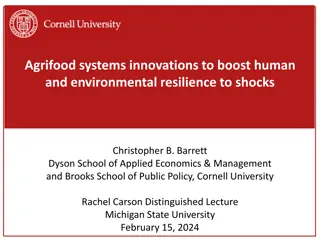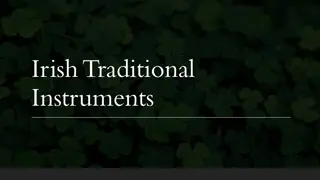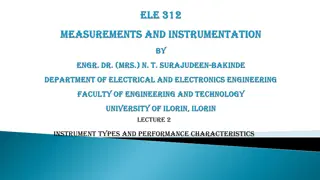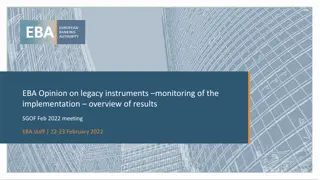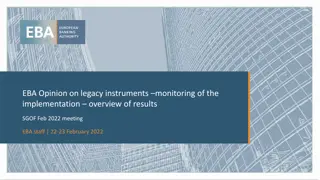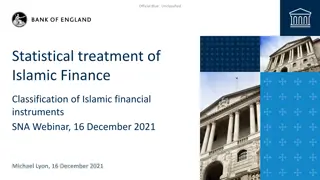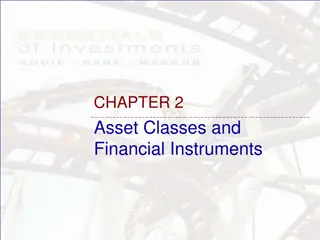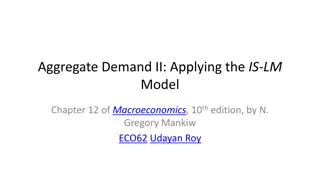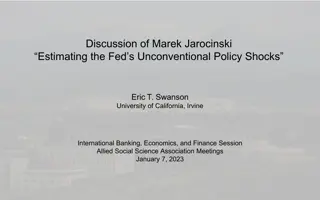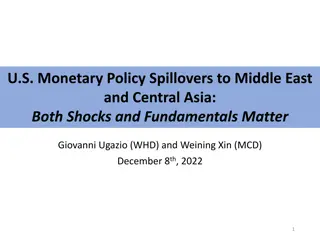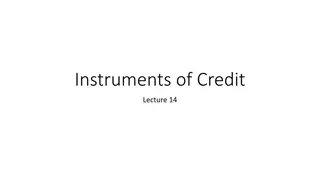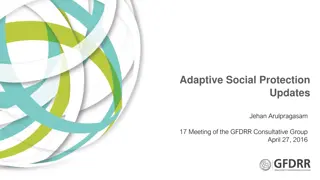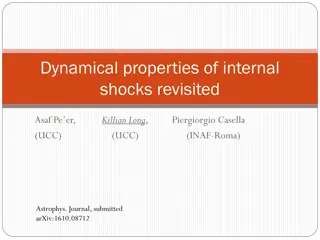Managing Global Shocks: Policy Instruments & Strategies
Global shocks originating from various sectors can severely impact economies, especially in low-income countries. Effective policies and instruments are crucial for managing these shocks. Explore ex-ante and ex-post strategies, along with challenges and solutions in this comprehensive overview.
Download Presentation

Please find below an Image/Link to download the presentation.
The content on the website is provided AS IS for your information and personal use only. It may not be sold, licensed, or shared on other websites without obtaining consent from the author.If you encounter any issues during the download, it is possible that the publisher has removed the file from their server.
You are allowed to download the files provided on this website for personal or commercial use, subject to the condition that they are used lawfully. All files are the property of their respective owners.
The content on the website is provided AS IS for your information and personal use only. It may not be sold, licensed, or shared on other websites without obtaining consent from the author.
E N D
Presentation Transcript
Policy Instruments to Manage Global Shocks Economic Growth Forum V FY 2021/22 (January 13, 2022) Michael Atingi-Ego Deputy Governor
2 Overview of global shocks Global shocks can originate from the financial world, cyberspace, biological and solar systems. The growing interconnectedness of the global economy, through financial and trade linkages, has created conditions for rapid and widespread disruptions from shocks. For low-income countries, because of limited diversification, pre-existing structural inefficiencies and narrower fiscal space, any adverse shocks, even temporary ones, can have profound impact on the economy. There is therefore need for effective policies and instruments to manage shocks. o
3 Policies and instruments to manage global shocks There are two types of policies and instruments i). Ex-ante policies & instruments ii). Ex-post policies & instruments Ex-ante instruments are to help mitigate risks (self-insurance), to limit probability of shocks happening, and if shocks happen, minimise the scale of damage to the economy. o Ex-post instruments, on the other hand, are instruments to help minimise the scale of damage from shocks and invigorate the economy after shocks. o
4 Case for Ex-Ante policies and instruments Ex-ante financial instruments or pre-arranged financial safety nets can insure the economy against shocks. o Enhances predictability of public finances to the extent that financial assistance is automatic. o Helps reduce policy pro-cyclicality. o Guarantees prompt liquidity needs as instruments are disbursed quickly after shocks hit the economy. o Helps preserves debt sustainability. o Experience, however, show that there is low use of ex-ante instruments among low-income countries, due largely to: o Weak technical capacity; o Cost considerations; o Difficulties in assessing and verifying contingencies, etc. o
5 Ex-Ante policies and instruments The ex-ante policies and instruments include: Export diversification. Buffers e.g. international reserves. Fiscal rules to manage revenue windfalls in good times and dissaving in bad times. Governance and institutional mechanism for transparency and accountability in the use of government resources, policy formulation and impact assessment. Pre-arranged financial safety nets e.g. hedging contracts, contingent debt instruments, and credit lines with international financial intuitions (IFI). Digitalization to help in contact tracing and isolation, remote working/learning, sending financial assistance to vulnerable groups, etc. o o o o o o There are however, limitations on the use of ex-ante instruments. o For instance, low-income countries face immense development needs, which imply huge opportunity costs of savings or building buffers. o Also, accumulation of international reserves entails huge carry-cost or quasi-fiscal costs. o
Ex-Ante policies and instruments - Other considerations 6
7 Case for Ex-Post policies and instruments The need for effective ex-post policy instruments: Sharp swings in terms of trade can serious affect economic growth, fiscal and external positions. o Shocks can result in considerable macroeconomic and output volatility, which in turn increases risks and uncertainty for the private sector and the government. o Abrupt revenue losses amid increased spending leads to budgetary uncertainty and perpetuates procyclical policy response. o Abrupt revenue losses amid increased spending, without concessional financing, can complicate the country s debt sustainability metrics and erode fiscal space. o
8 Ex-post policies and instruments The ex-post policies and instruments include: o Macroeconomic adjustment (fiscal policy, monetary policy and exchange rate management). Financing (external and domestic). Structural reforms policies. Governance and institutional mechanisms. o o o o Fiscal policy o Reduce spending on non-priority areas, postpone capital intensive and import-dependent projects to help improve external balance. Unsustainable when there are long duration/repeated shocks. o Revenue enhancing measures are positive and long-lasting to protect against future shocks, but take time to design and implement. o Monetary policy and exchange rate adjustment o Often directed at private sector investment and saving to re-establish macroeconomic equilibrium after shock. Needs a robust financial system to fully propagate to the private sector. o Depreciation of the real exchange rate improves price competitiveness and makes imports more expensive (helps improve external balance. Depreciation of the exchange rate is however, unpopular as they feed-through to domestic consumer prices. o
9 Ex-Post policies and instruments Concessional financing o Helps smooth the adjustment process as it limits the need for policies that compress demand and aggravate the shock-induced decline in output. o Structural reforms o Has long-lasting impact on macroeconomic adjustment and stability since it has the ability to re-orient private sector behaviour, enhances efficiency and growth prospects, has positive effects on diversification of the economic base. o It, however, takes long to design and implement and therefore unable to overcome the adverse impact of shocks in the short-run. o Governance and institutional mechanisms o To ensure transparency and accountability in the use of government resources, policy formulation and policy impact assessment. o Enhances the systems for the distribution of financial/food assistance to the vulnerable groups. o
10 Conclusion Evidence show that the recovery in global economic growth following the adverse impact of COVID-19 has been, in part, driven by countries with strong ex-ante instruments (such as well-diversified economies, governance structures for contact tracing, remote working/learning, and support mechanism to vulnerable groups) as well as timely and strong ex-post instruments. There is need to develop governance and operational support system for the vulnerable people, including establishing a robust database. o Build capacity of the responsible MDAs to undertake pre-arranged financial safety nets with the ITI. o There is need to develop governance and operational support system for the vulnerable people, including establishing a robust database. o
11 THANK YOU


